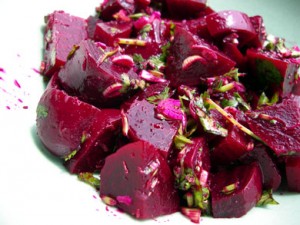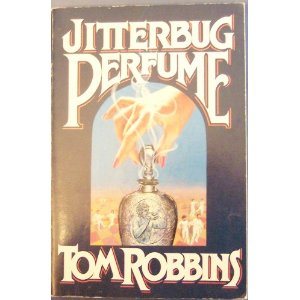But, but mom, I don’t like beets.
My friends said that when I was a kid; I don’t know why, other than the beet’s ubiquitous presence on the 1970s relish tray at dinner.
Beetroot, or what North Americans call beets, are part of the Australian Big  Mac hamburger.
Mac hamburger.
Best writing about beets? Tom Robbins in his 1984 novel, Jitterbug Perfume.
““The beet is the most intense of vegetables. The radish, admittedly, is more feverish, but the fire of the radish is a cold fire, the fire of discontent not of passion. Tomatoes are lusty enough, yet there runs through tomatoes an undercurrent of frivolity. Beets are deadly serious.”
“The beet is the melancholy vegetable, the one most willing to suffer. You can’t squeeze blood out of a turnip…”
“Slavic peoples get their physical characteristics from potatoes, their smoldering inquietude from radishes, their seriousness from beets.”
And foodborne illness.
Jacks et al report in Epidemiology and Infection that in 2010, 7/44 (16%) reported foodborne outbreaks in Finland were linked with raw beetroot consumption. We reviewed data from the national outbreak registry in order to hypothesize the aetiology of illness and to prevent further outbreaks. In the seven outbreaks, 124 cases among 623 respondents were identified. Consumption of raw beetroot was strongly associated with gastrointestinal illness (relative risk 8·99, 95% confidence interval 6·06–13·35). The illness was characterized by sudden onset of gastrointestinal  symptoms; the median incubation time was 40 min and duration of illness 5 h. No common foodborne pathogens or toxins were found in either clinical or beetroot samples, but all tested beetroot samples were of poor quality according to total bacterial counts. Beta-haemolytic Pseudomonas fluorescens was detected in several beetroot samples but its effect on human health is unknown. No outbreaks were reported after the Finnish Food Safety Authority Evira advised against serving raw beetroot in institutional canteens.
symptoms; the median incubation time was 40 min and duration of illness 5 h. No common foodborne pathogens or toxins were found in either clinical or beetroot samples, but all tested beetroot samples were of poor quality according to total bacterial counts. Beta-haemolytic Pseudomonas fluorescens was detected in several beetroot samples but its effect on human health is unknown. No outbreaks were reported after the Finnish Food Safety Authority Evira advised against serving raw beetroot in institutional canteens.
 parents every morning – when a shitty U2 song came on from that free album that no one wanted.
parents every morning – when a shitty U2 song came on from that free album that no one wanted.



